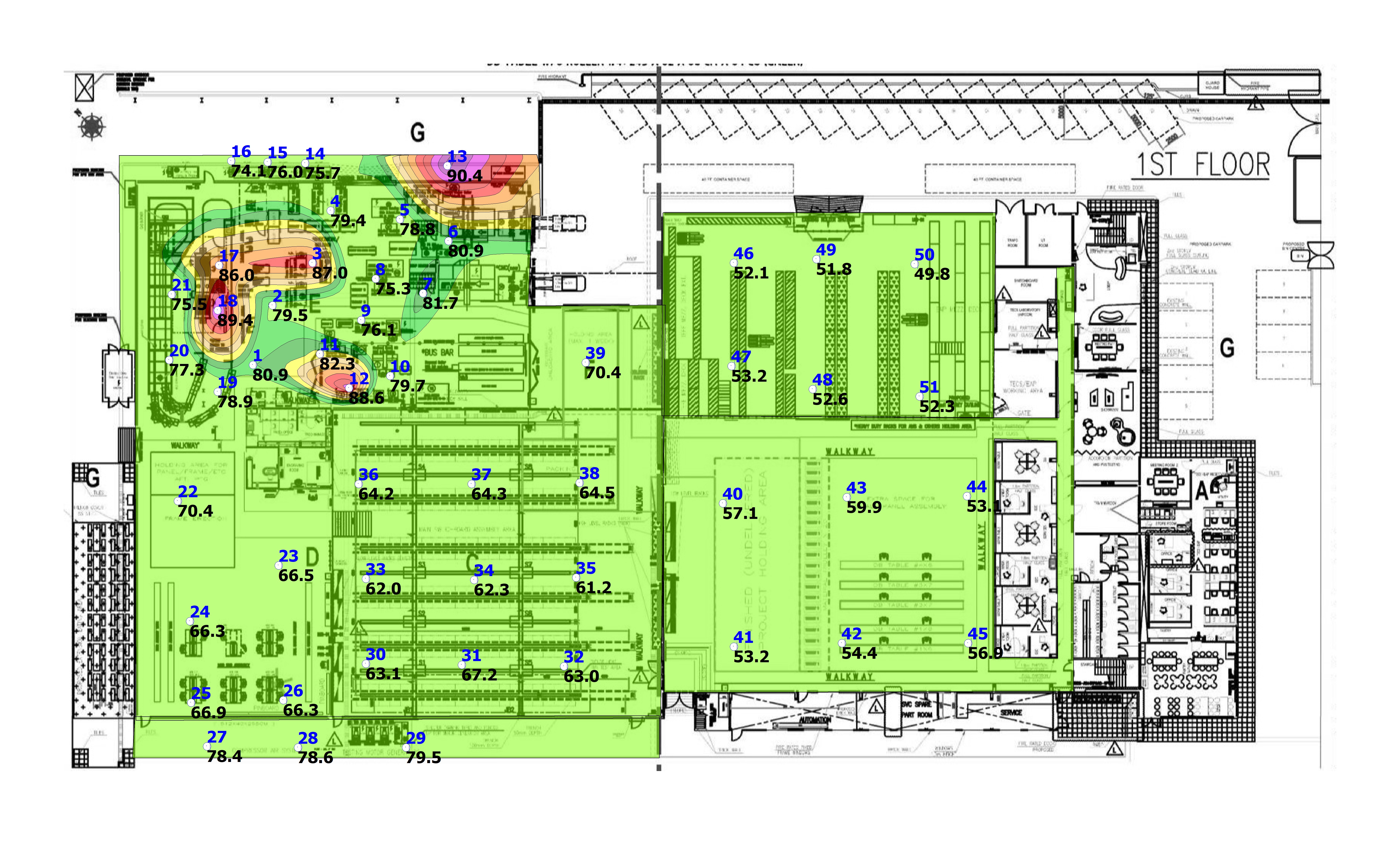Qsafe Pte Ltd competent personnel (Noise Monitoring Officer) shall assist the occupier of the workplace in all aspects start from performing the noise monitoring in their premises until noise monitoring report submission to Ministry to Manpower.
Legal requirement for noise measurement
As per Workplace Safety and Health (Noise) regulations 2011, every occupier (factory license holder) of the workplace shall measure the noise level generated by their workplace (either by machinery or equipment used in their workplace and / or any process, operation or work carried out in their workplace) and submit through an online system to Ministry of Manpower.
Qsafe Consultants and services provide the most competent personnel for performing noise measurement. We are serving for various clients ranging from manufacturing industry to petro-chemical industry.

Frequency of noise measurement
The frequency of noise monitoring is
- At least once in three years
- Whenever there is an change in the machinery layout, equipment size or position, processes, operations
- Or when the Commissioner (MOM) instructed the occupier to do so (whichever earlier)
Definition of exposure to high noise level
As per Workplace Safety and Health (Noise) regulations 2011, a person shall be considered exposed to high noise (while not wearing the hearing protector) when
- The sound pressure level is more than 85 dB(A) over an 8-hours work day
- the permissible exposure limit for noise specified in the Workplace Safety and Health (Noise) regulations 2011, PART IV, THE SCHEDULE – PERMISSIBLE EXPOSURE LIMITS FOR NOISE is exceeded
- a peak sound pressure level exceeding 140 dB(C)
Competent personnel to measure noise levels
The personnel who measuring the noise level shall be competent. The competency required for noise monitoring officer in Singapore is as follows :
- Shall pass the Noise Monitoring officer course
- Shall know how to operate / calibrate the sound level meter and record the readings
- Shall use a calibrated type 1 sound level meter
QSafe Consultants & Services provide the most competent personnel to perform the workplace noise monitoring and personal dosimetry.
Purpose of noise monitoring
Apart from the legal requirement the purpose of noise monitoring includes (but not limited to)
- Identify the noise sources (machine / process)
- Measure the noise levels
- Quantify / identify the workforce exposed to high noise levels
- Verify the effectiveness of the control measures implemented to control the noise level
- indicate the locations where hearing protectors to be used
Our Noise monitoring officers shall conduct the noise monitoring in compliance with Workplace Safety and Health (Noise) Regulations, 2011and Workplace Safety & Health Guidelines (Hearing Conservation) Programme Rev 2014.
Noise Monitoring Report
Qsafe Consultants and Services shall prepare the noise monitoring reports which consists of the following :
- Details of Competent Person performing the noise mapping
- Details of Workplace Monitored
- Workplace Representative(s)
- Details of Instrumentation
- Certification
- Noise Map & Machine Noise Levels
- Results Table for Personal Monitoring
- Recommendations for Implementation of Hearing Conservation Programme
- Appendices
- Appendix 1 – Hearing Conservation Programme
- Appendix 2 – Results Table (Personal Monitoring)
- Appendix 3 – Recommendations for Implementation of HCP for Noisy Workplaces
- Appendix 4 – Noise Measurement Report
Submission of noise monitoring report to MOM
As Qsafe Consultants and Services is an MOM approved noise monitoring company, we shall submit the noise monitoring report on behalf of our clients.
Outcome of exposure to high noise levels
Exposure to high noise levels of noise causes hearing loss and may cause other harmful health effects as well. The extent of damage depends primarily on the intensity of the noise and the duration of the exposure.
Hearing loss can be temporary or permanent. Temporary hearing loss results from short-term exposures to noise, with normal hearing returning after period of rest. Generally, prolonged exposure to high noise levels over a period of time gradually causes permanent damage (Noise induced deafness).
Workplace Noise Mapping


